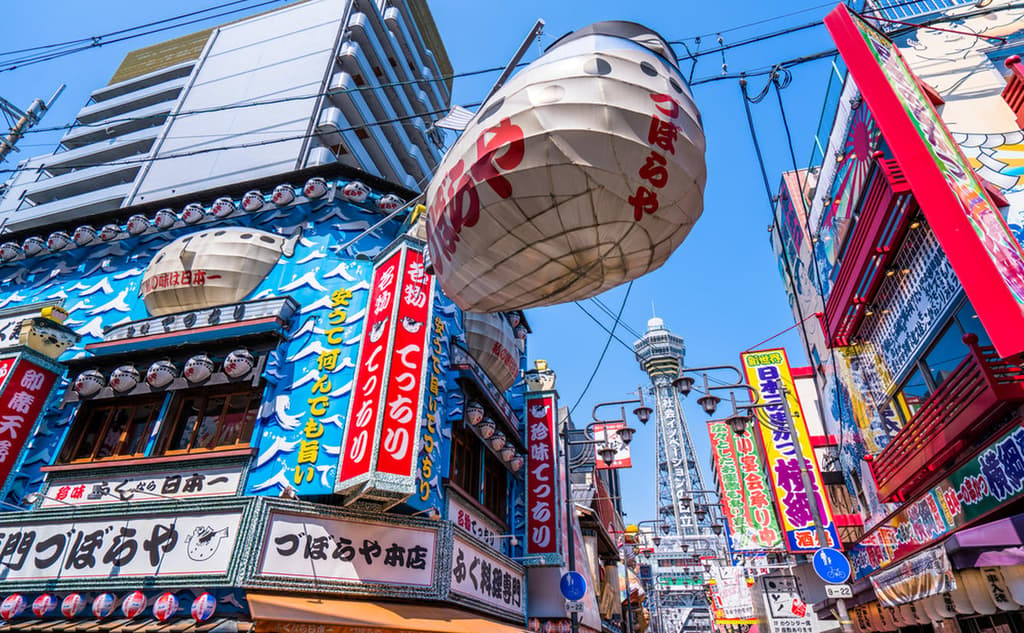At the foot of Osaka's iconic Tsutenkaku Tower lies Shinsekai, one of the city's most unique districts. With its dazzling neon lights and flashy signboards, it's a place many visitors instantly associate with the vibrant image of Osaka. Here, you can not only savor famous local dishes like kushikatsu, but also step back in time and enjoy the retro, nostalgic atmosphere that still lingers in the streets. In this guide, we'll take you deep into the charms of Shinsekai and show you how to experience it like a local!
What is Shinsekai?
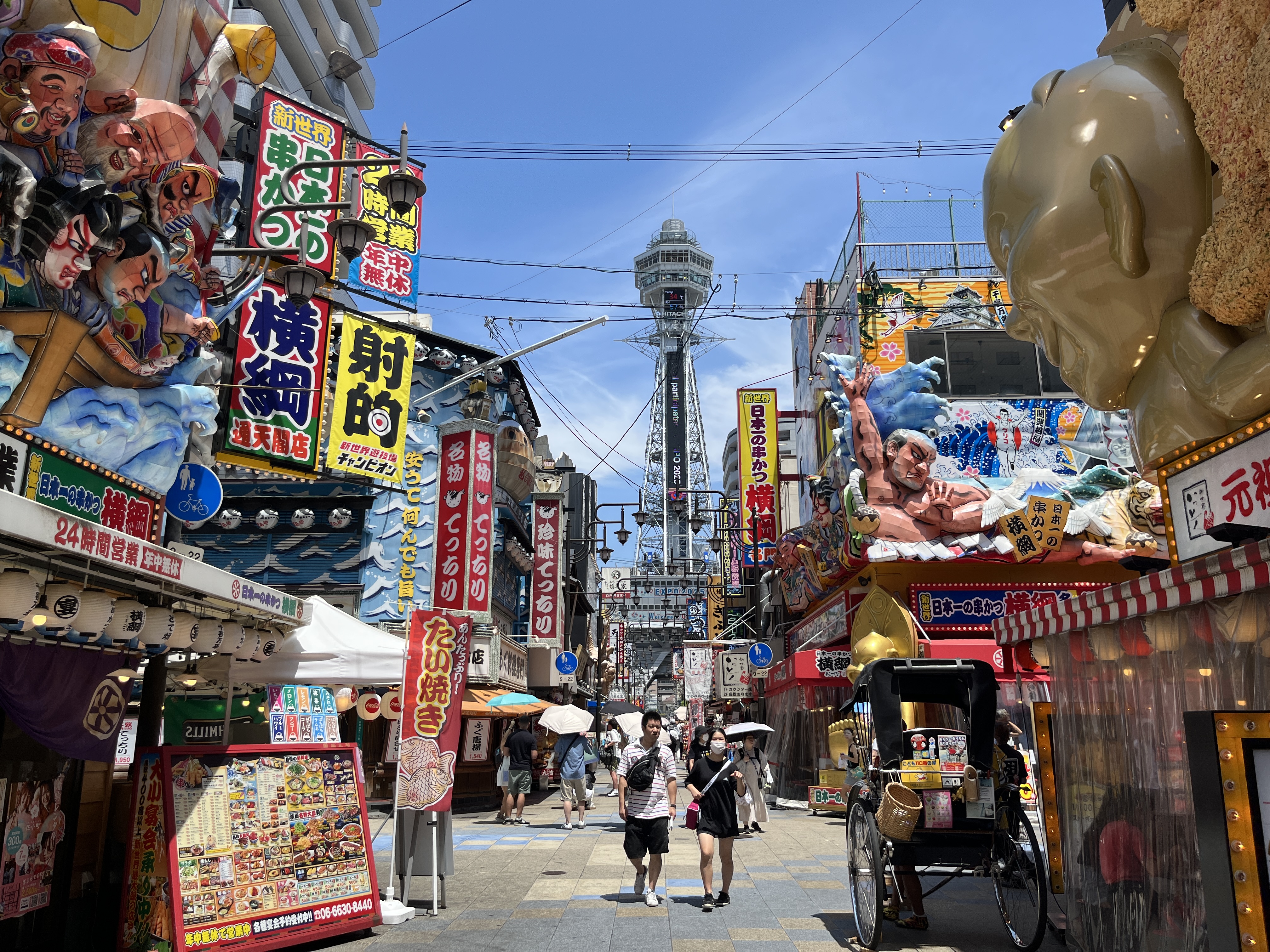
"Shinsekai" is located in the downtown area of southern Osaka, at the foot of Tsutenkaku Tower, which is said to be the symbol of Osaka. From its flashy signs, glittering neon lights, and energetic barkers, you can experience "THE Osaka". Especially among Osaka's areas, it's a popular spot for tourists and foreigners as a place where a retro atmosphere remains.
The place where Shinsekai is located was once fields and wasteland. The opportunity for Shinsekai to become an urban area was the holding of the 5th National Industrial Exhibition, a "world's fair," in 1903 (Showa 36). Transportation networks were developed in conjunction with this exhibition.
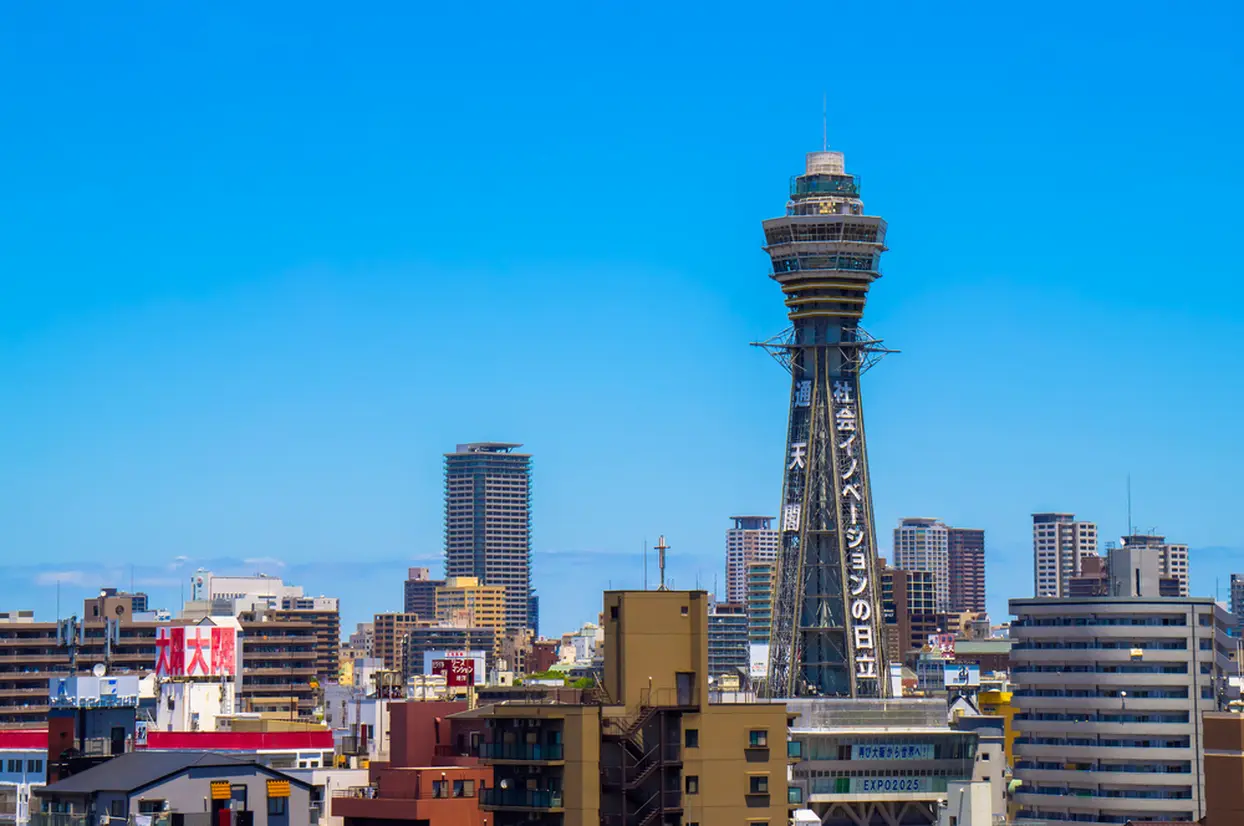
After the exhibition ended, the eastern side of approximately 50,000 tsubo was turned into Tennoji Park by Osaka City, and development of Shinsekai began on the western side. At the northern end, a tower modeled after the Eiffel Tower was built and named "Tsutenkaku." This "Tsutenkaku" was actually different from today's Tsutenkaku. During World War II, it was demolished due to being caught in a fire and being an easy target for air raids.
Even after losing its symbolic Tsutenkaku, post-war Shinsekai continued to be loved by people. Then, thanks to local people who rose up to somehow restore Tsutenkaku, the second-generation Tsutenkaku was born in 1956 (Showa 31).
Shinsekai, overlooked by the second-generation Tsutenkaku, further developed into one of Osaka's leading entertainment districts lined with Osaka's specialty gourmet and flashy signs. When you visit Shinsekai, you can feel Osaka's deep atmosphere on your skin. Also, since there are so many shops, it's a spot you can enjoy no matter how many times you go.
Highlights
Eat Your Fill of Osaka's Specialty Gourmet "Kushikatsu"!
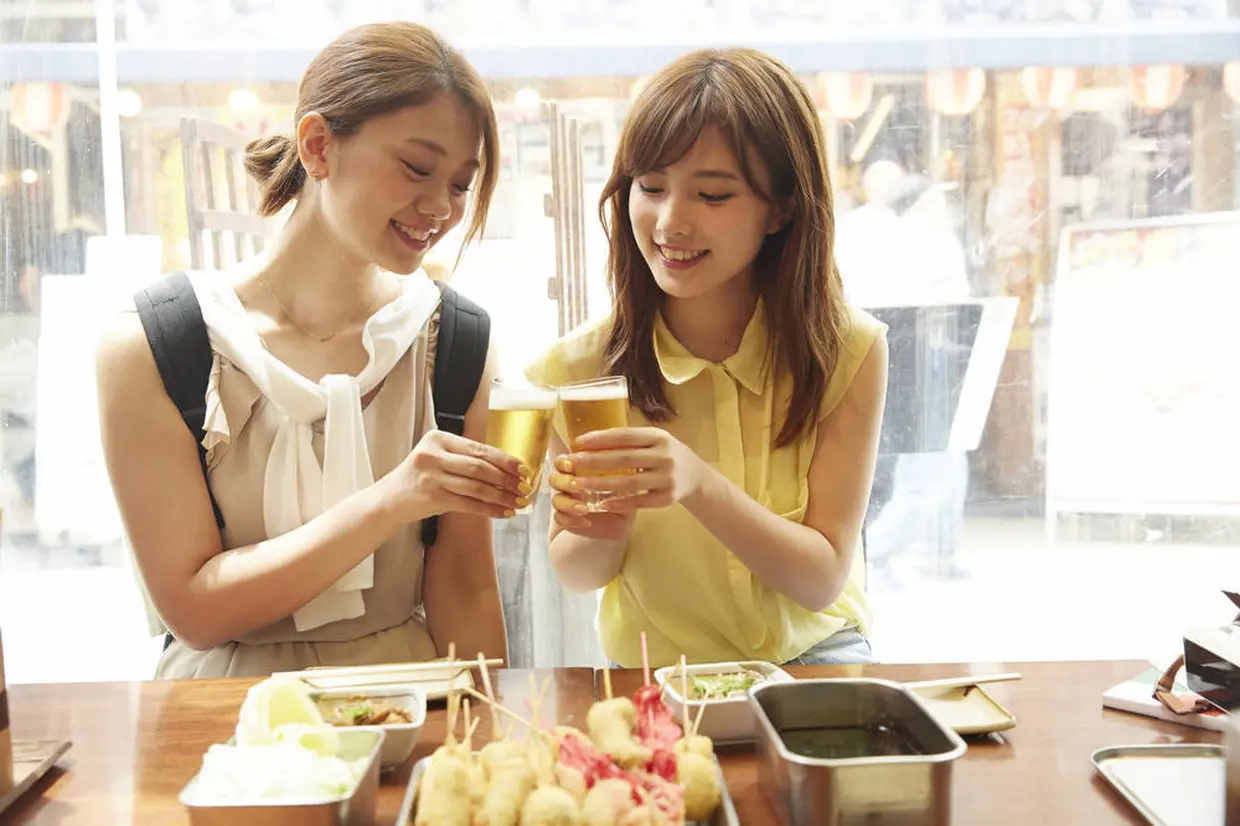
When it comes to Shinsekai, it's kushikatsu. There are so many kushikatsu shops that you can see them everywhere you look. For those who are confused about which kushikatsu shop to go to due to shops with touts or simply too many shops, we'll introduce shops where you can't go wrong!
By coming here, you can enjoy Osaka to your heart's content, making it a perfect spot for first-time Osaka tourism. Come hungry and challenge yourself to "kuidaore" (eating yourself into bankruptcy)!
The Original Kushikatsu Shop "Daruma"
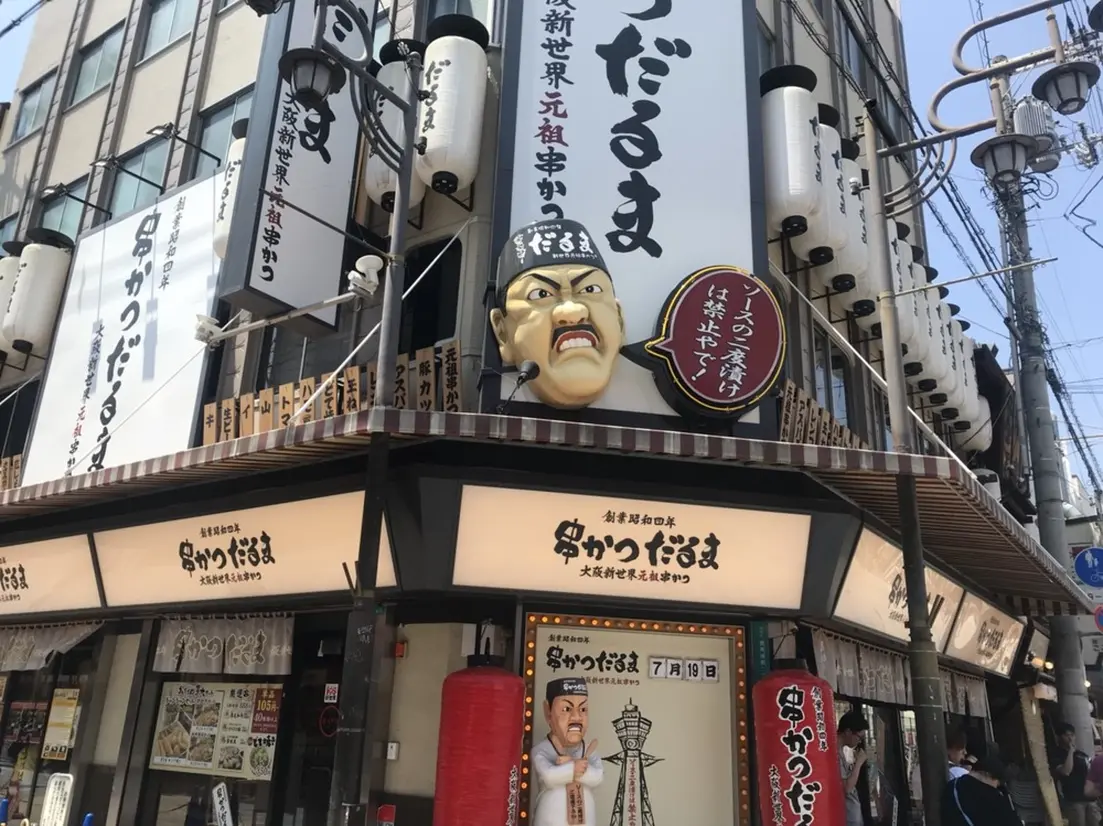
Kushikatsu "Daruma" is said to be the original kushikatsu shop in Shinsekai. Many of you may already know about it. Starting with only 12 counter seats, it's now a hugely popular shop that has even expanded overseas. It also has many locations in Osaka.
The uncle doll hanging the "No Double Dipping" sign at the entrance is also famous. Let's take a photo together as a memento of coming to Shinsekai and Osaka.
In Shinsekai, there are four shops: "Shinsekai Main Store," "Janjan Shop," "Tsutenkaku Shop," and "Dobutsuen-mae Shop." All shops are very famous and have many tourists, so they have an easy-to-enter atmosphere. Be careful as shops vary - some large shops have table seating, while others have counter seating only. The Shinsekai Main Store has counter seating only, so it might not be suitable for families or large groups.
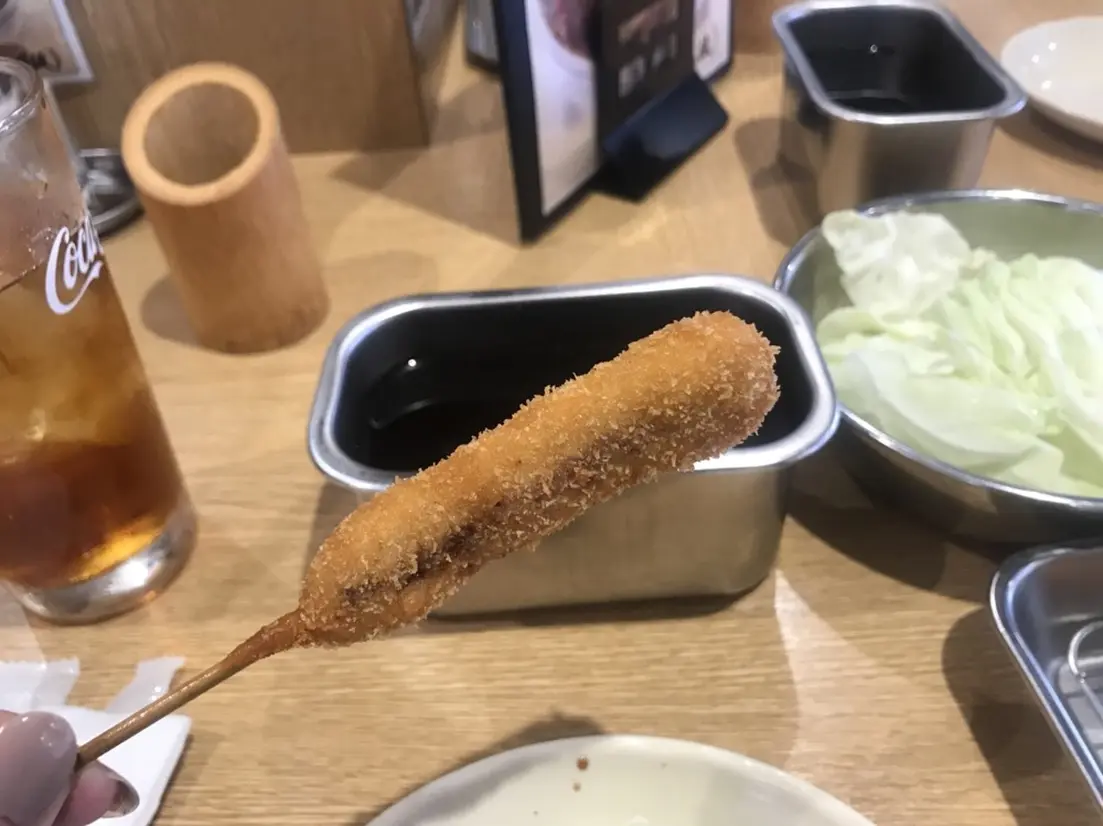
Most kushikatsu cost around 100 yen per stick, so you can adjust the quantity according to your appetite. Therefore, you can also hop to other shops. The coating is light and each stick doesn't have too much volume, so you can eat it as a snack between meals.
If you want to experience the authentic Shinsekai atmosphere and Osaka's depth, definitely try the Main Store!
For Deep Osaka Flavor, Try "Tengu"
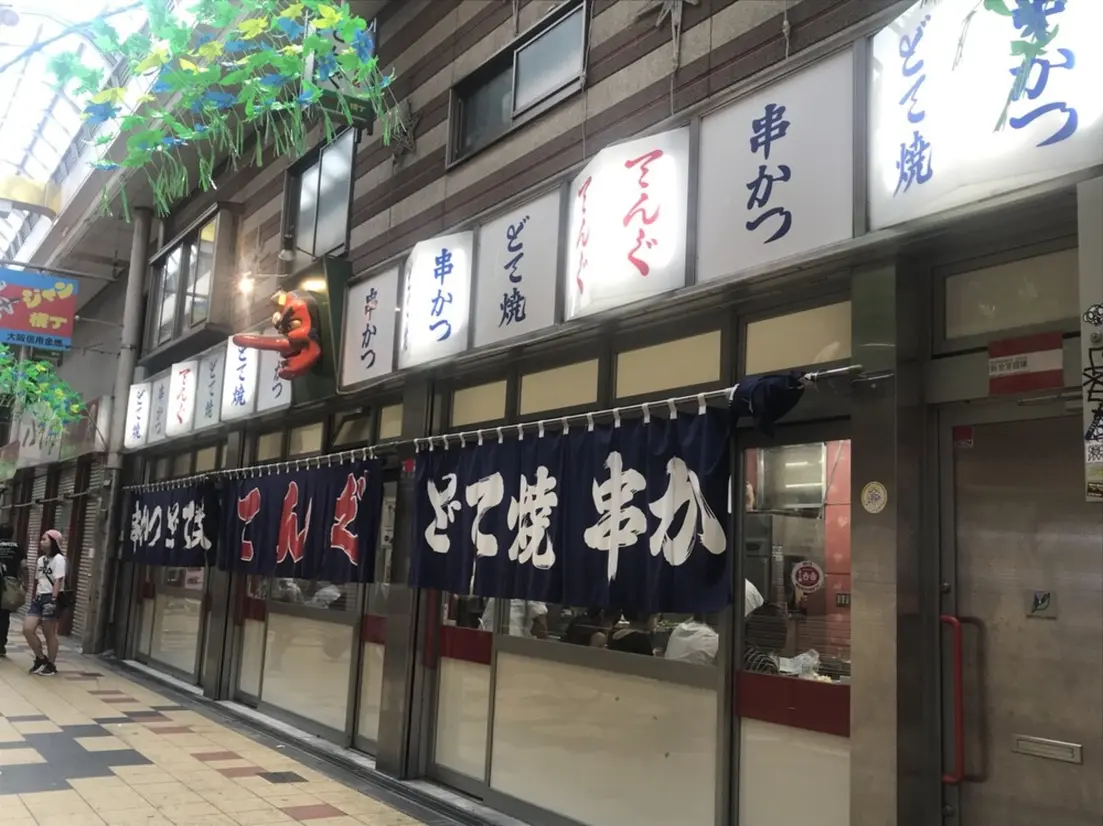
"Tengu," located within Janjan Yokocho, is a kushikatsu shop with a retro and deep atmosphere. The shop has counter seating only, and you order from the staff inside the counter while looking at the menu hanging on the wall. Although it may seem intimidating because it's counter-only, many tourists visit, so feel free to enter.
Basic kushikatsu costs 100 yen per stick. There are also other simple, standard menu items like lotus root and asparagus lined up. The kushikatsu fried one by one with skilled technique is exquisite. This kushikatsu is also famous for its fine coating.
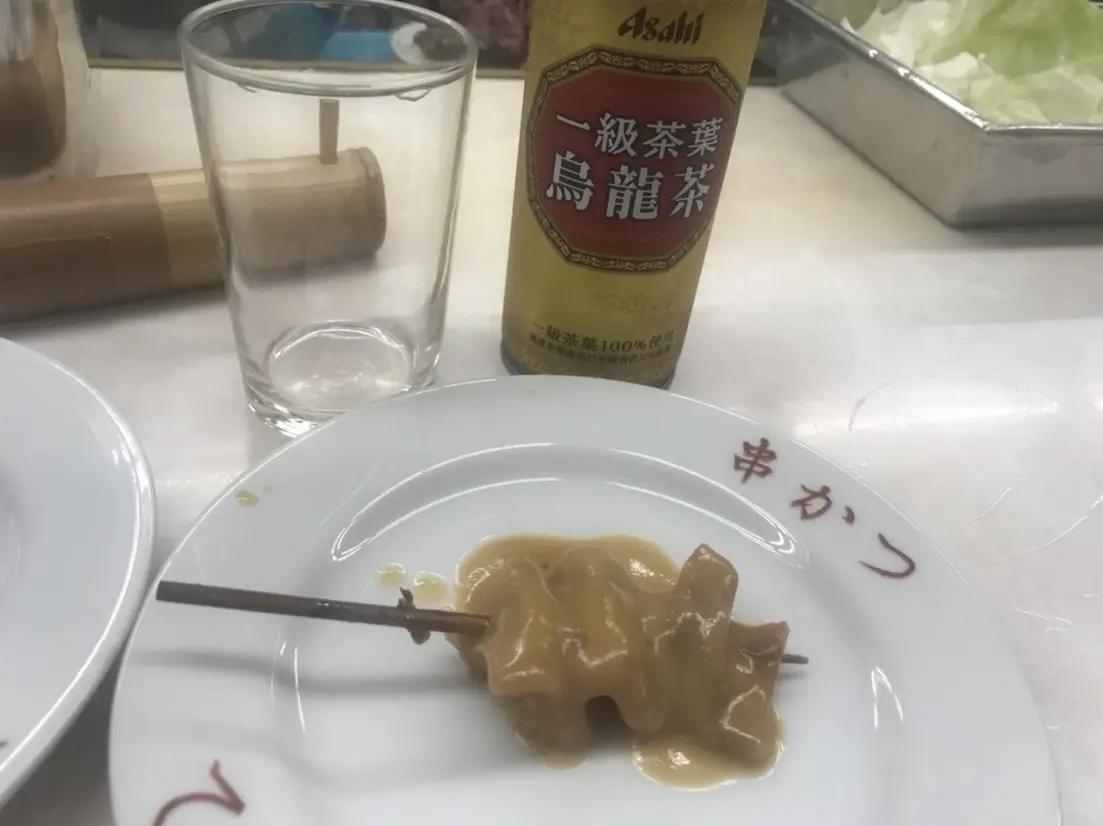
Also, at Tengu, "dote-yaki" is a specialty. The beef tendons simmered until melted in miso sauce are exquisite. With its rich and heavy flavor, it's perfect with beer or alcohol. You can also order this by the stick, so you can hop to other shops and enjoy comparing tastes.
If Kushikatsu Alone Isn't Enough, Try "Irori"
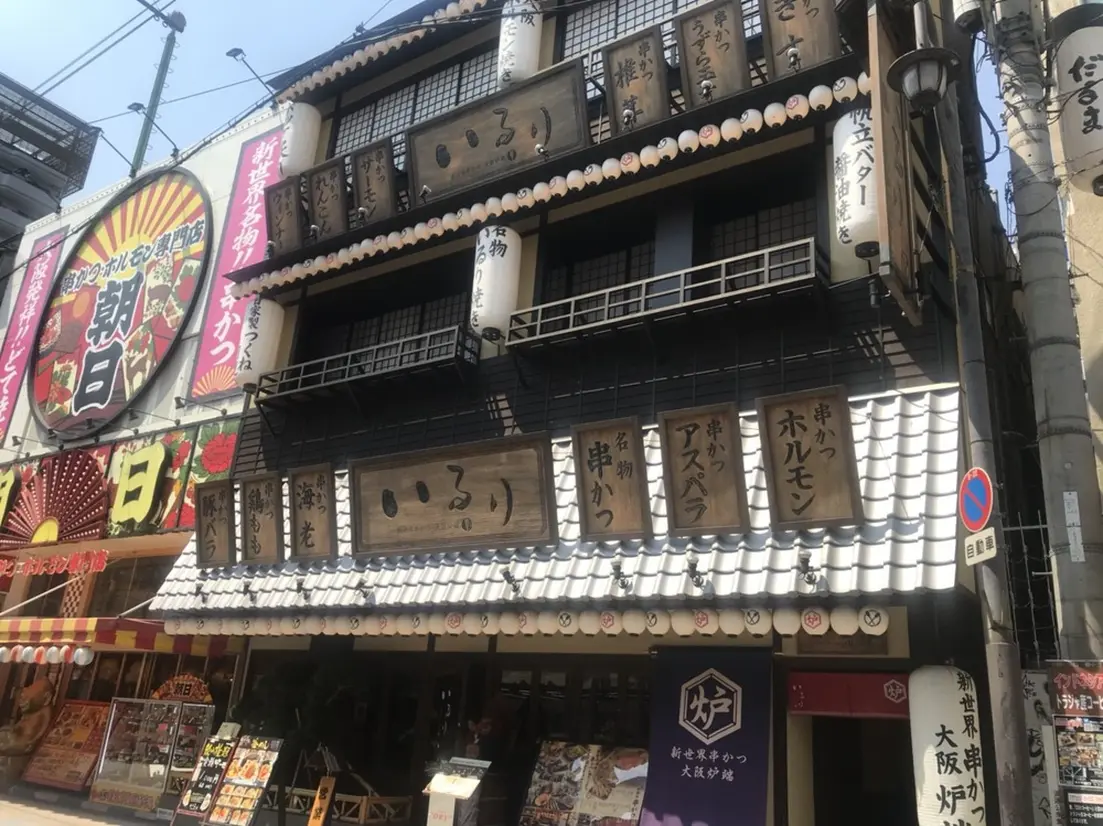
"Irori," located on Koen Hondori, allows you to leisurely enjoy kushikatsu in a spacious three-story interior. The shop has counter seats, table seats, and tatami seating, so you can use it in various ways depending on your needs. If you want to slowly enjoy kushikatsu while chatting with friends or family, this is recommended.
Also, in addition to kushikatsu, they have various other appetizers like sashimi. Plus, they have not just beer but a wide variety of alcoholic drinks like sour cocktails, so it's recommended for people who want to slowly drink while enjoying kushikatsu.
For kushikatsu, they have all the basics like standard kushikatsu, lotus root, and asparagus. The asparagus is fried whole and is very filling, so definitely try it.
Enjoy Retro Games in Janjan Yokocho
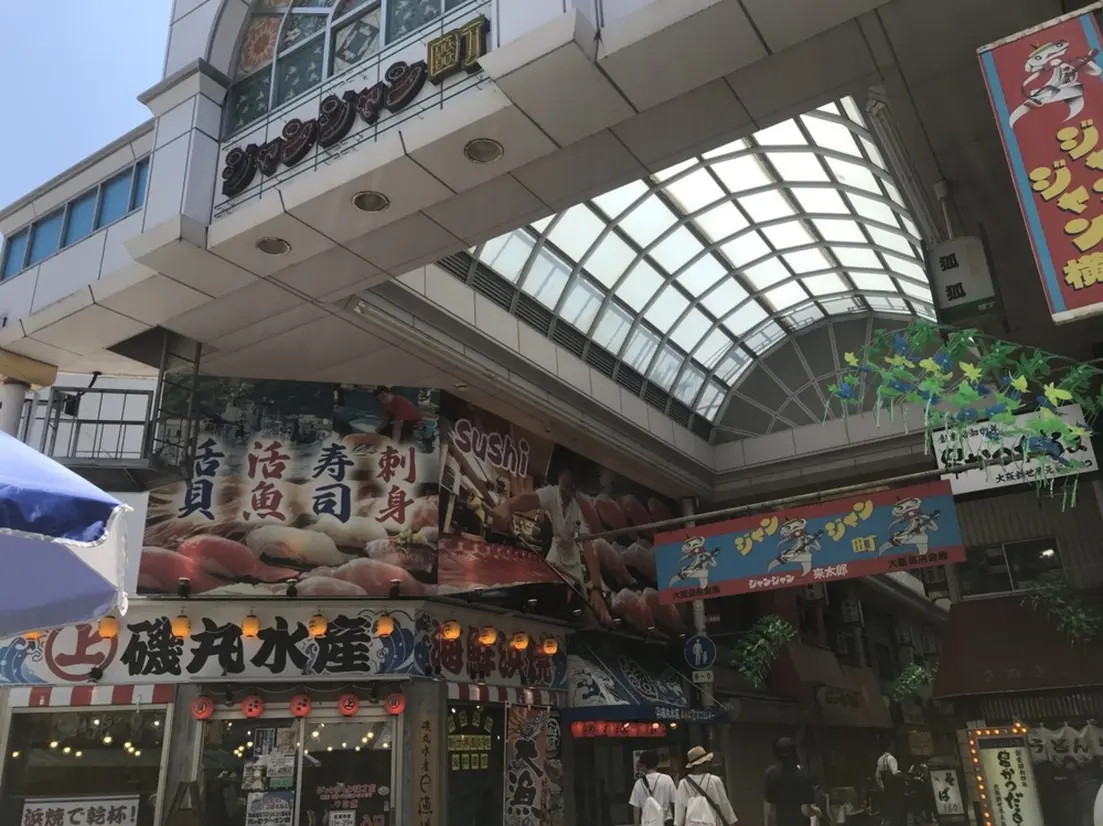
Janjan Yokocho refers to the shopping street located in the southeast of Shinsekai, created in 1921. While its official name is "Nanyo-dori Shopping Street," it came to be called by this name because shamisen instruments were ringing "janjan" during the bustling early Showa period. Yoshimoto's theater "Shin Hangetsu," familiar in Osaka, was also in this alley, and many comedians were produced there.
Janjan Yokocho currently has a very narrow structure, about 180m long and 2.5m wide. The arcade is lined with traditional kushikatsu shops and amusement parlors, unique spots that are fun just to walk through.
Here, we'll introduce "playable" spots unique to Janjan Yokocho.
Enjoy Retro Games
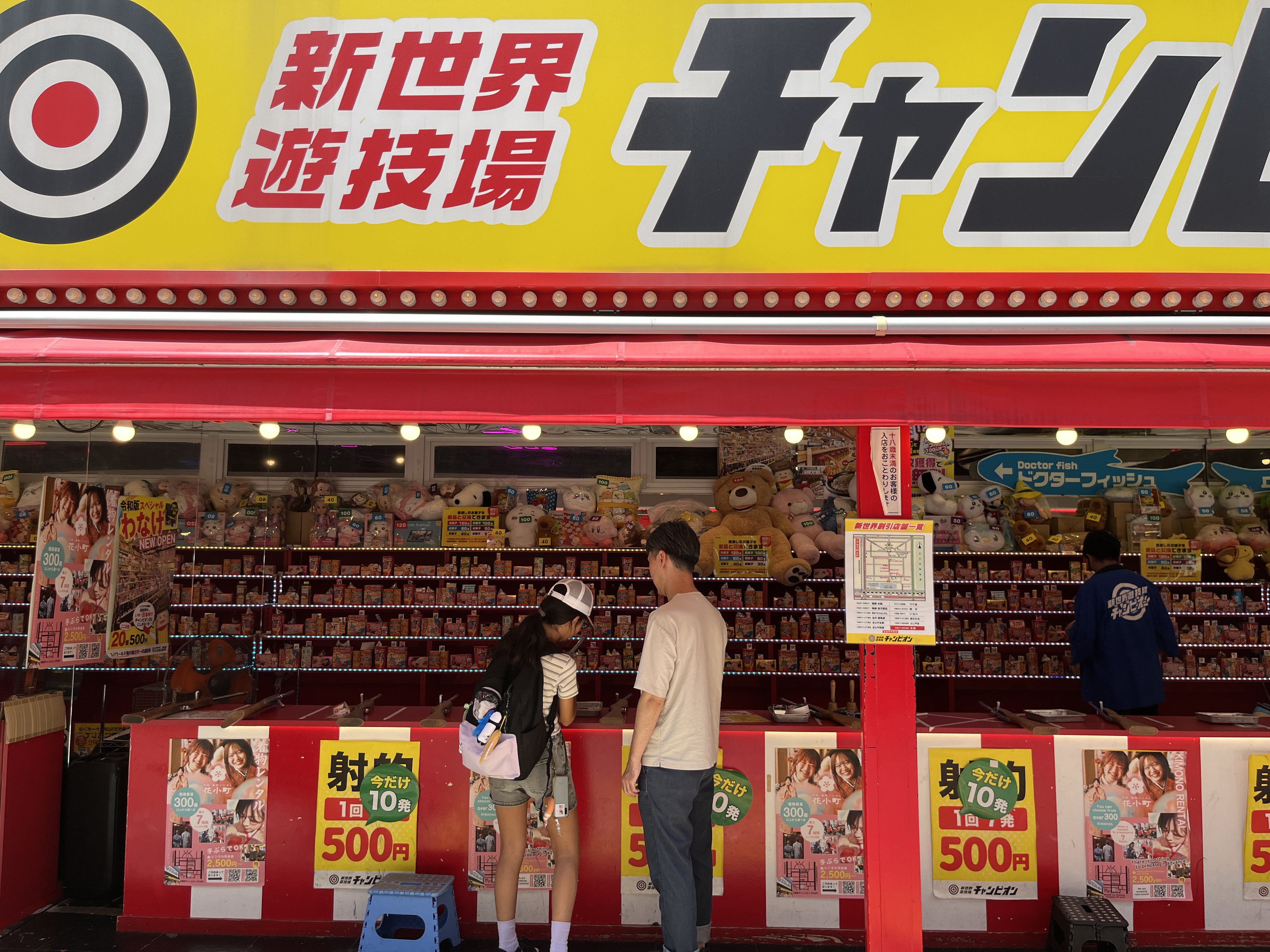
In the Shinsekai area, you can enjoy shooting games that have been played in Japan for a long time. As you walk along the streets, you can find several shooting game shops and others, so casually drop into any that catch your interest.
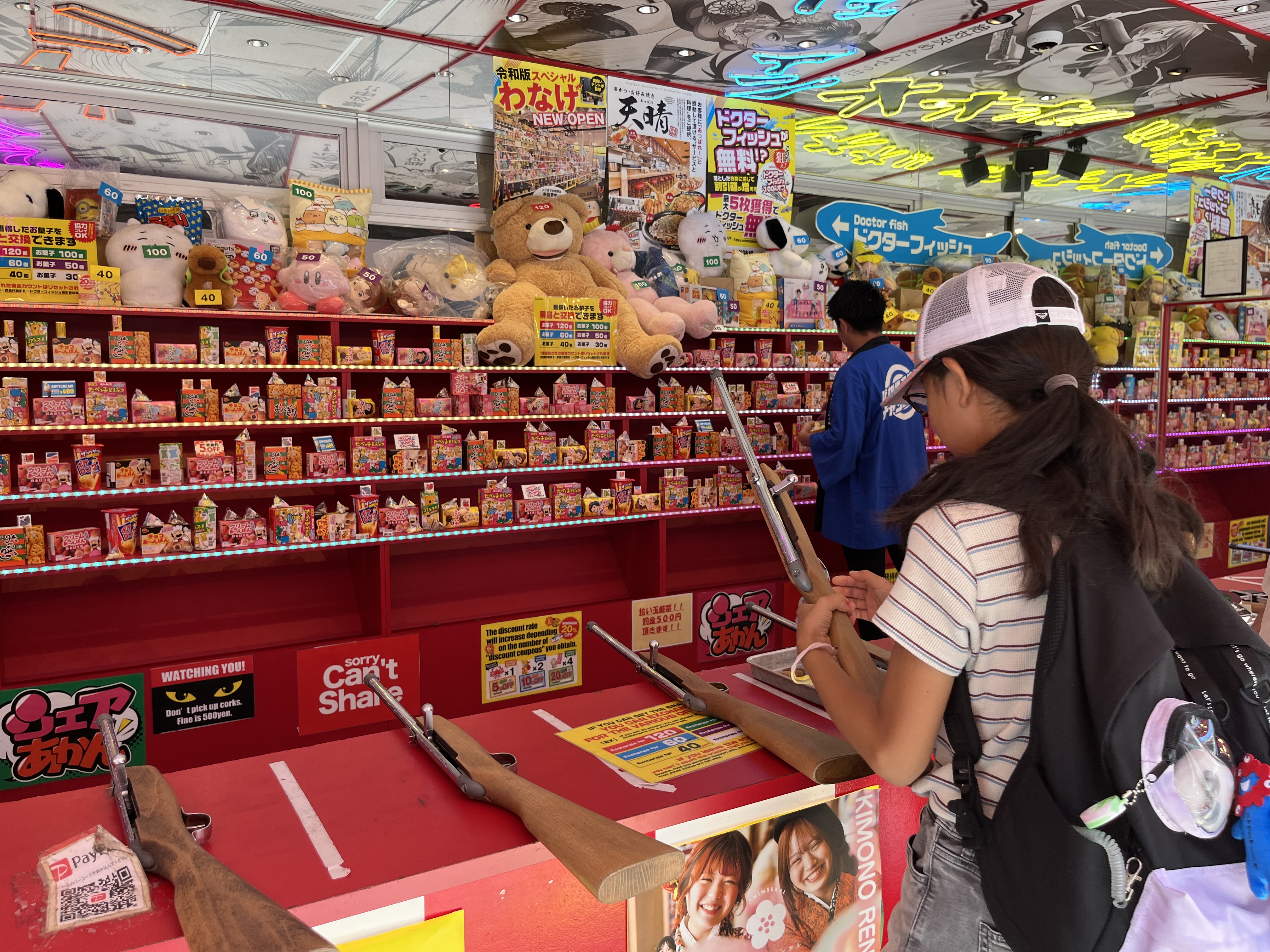
You aim at targets like candy and toys, and if you shoot them down, you can get prizes. Unique shop staff will give you proper instruction, so even beginners can feel safe.
Showa-Era Game Center "Kasuga Goraku-jo"
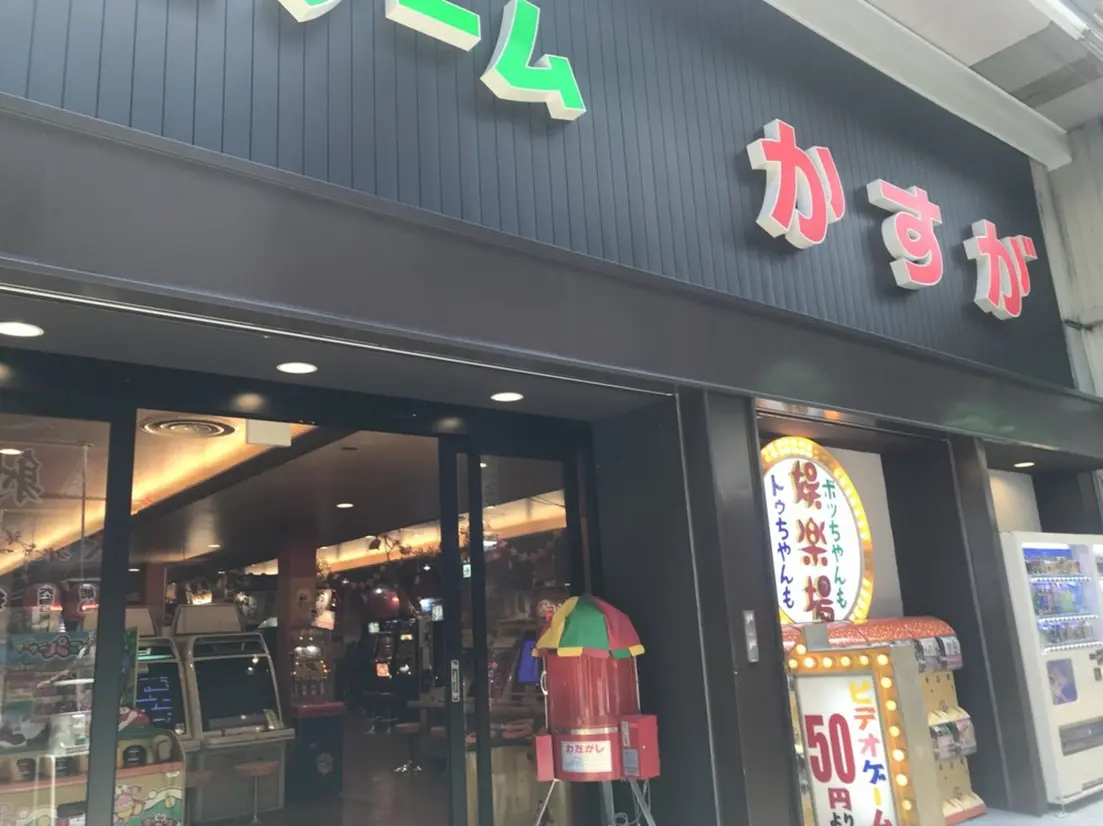
"Kasuga Goraku-jo" allows you to enjoy traditional roulette games and fighting games at bargain prices.
Many games can be played for 50 yen per try, making them popular with elementary school students. Also, for fathers and mothers, there are nostalgic games, so the whole family can enjoy them.
Additionally, they also have modern shooting games and other games adapted to the times, making them popular with young students and couples. How about enjoying retro games as a side trip during dating or sightseeing?
View Osaka City from Osaka's Symbol "Tsutenkaku"
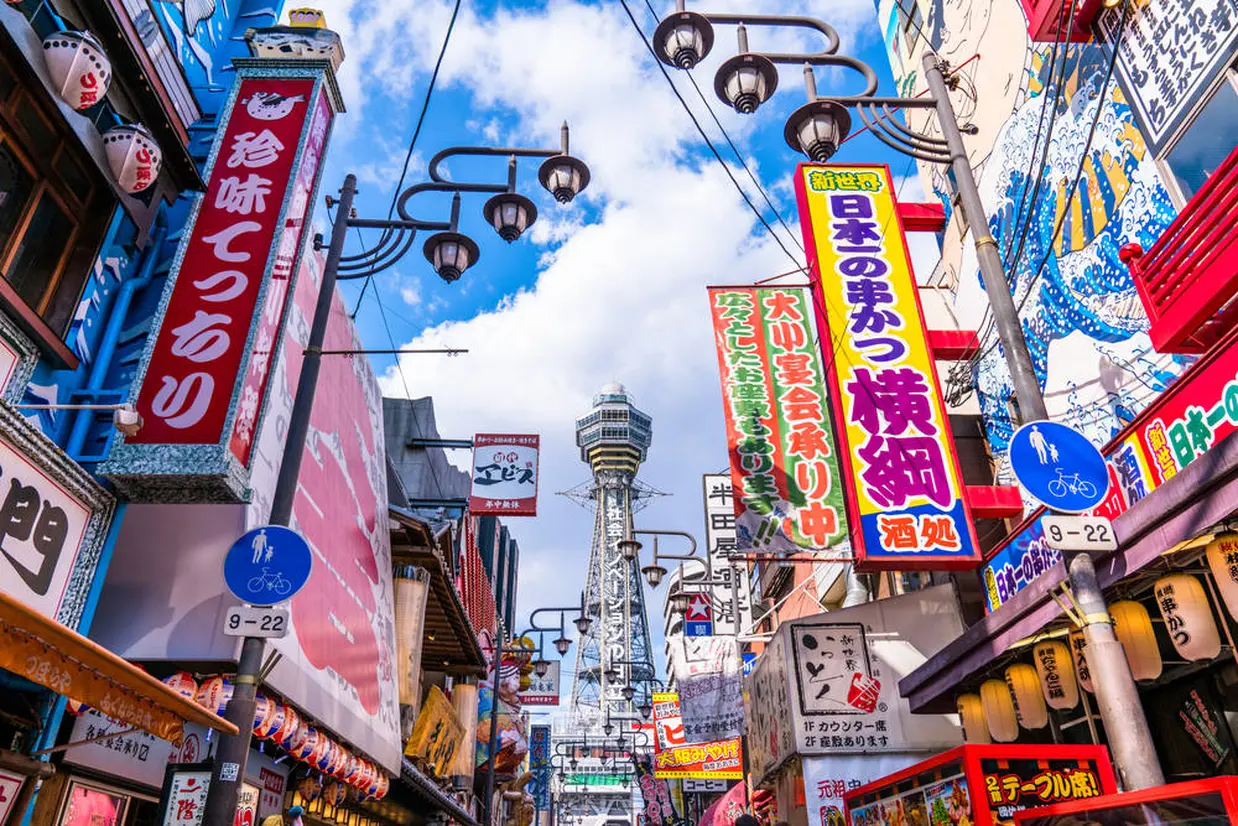
"Tsutenkaku," which was the catalyst for Shinsekai's development. This symbol of Osaka cannot be left out of Shinsekai tourism. It's an enjoyable spot filled with mechanisms that can be enjoyed by children and adults alike, not just overlooking Osaka from the observation deck.
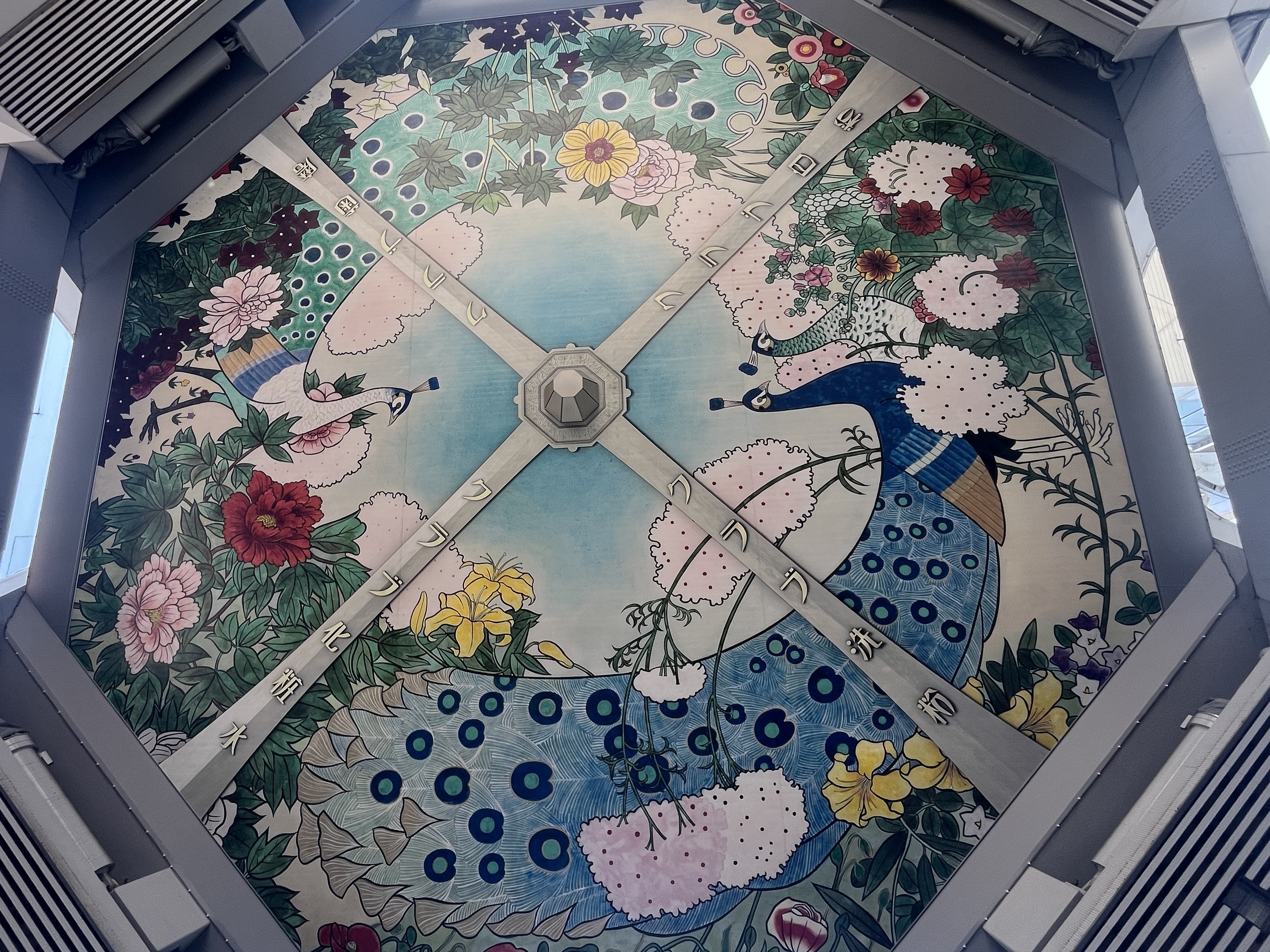
Before entering Tsutenkaku, first enter under Tsutenkaku and look up to view the large ceiling painting under Tsutenkaku. This is a reproduction of the ceiling painting from the original Tsutenkaku that was damaged in World War II. It's an easily overlooked spot because it's on the ceiling, but with fine pictures drawn in a large circle, it's a must-see.
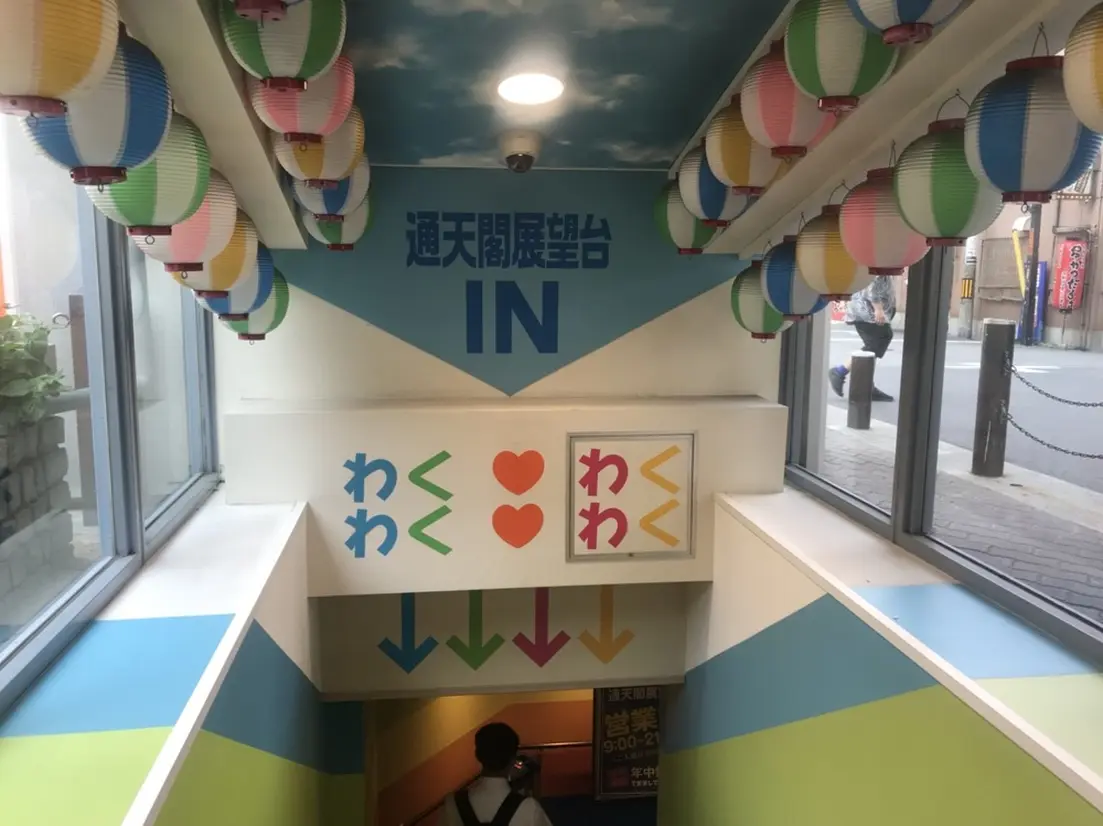
To climb Tsutenkaku, you must first go down to the basement. In the underground Wakuwaku Land, you can enjoy confectionery antenna shops and photo spots.
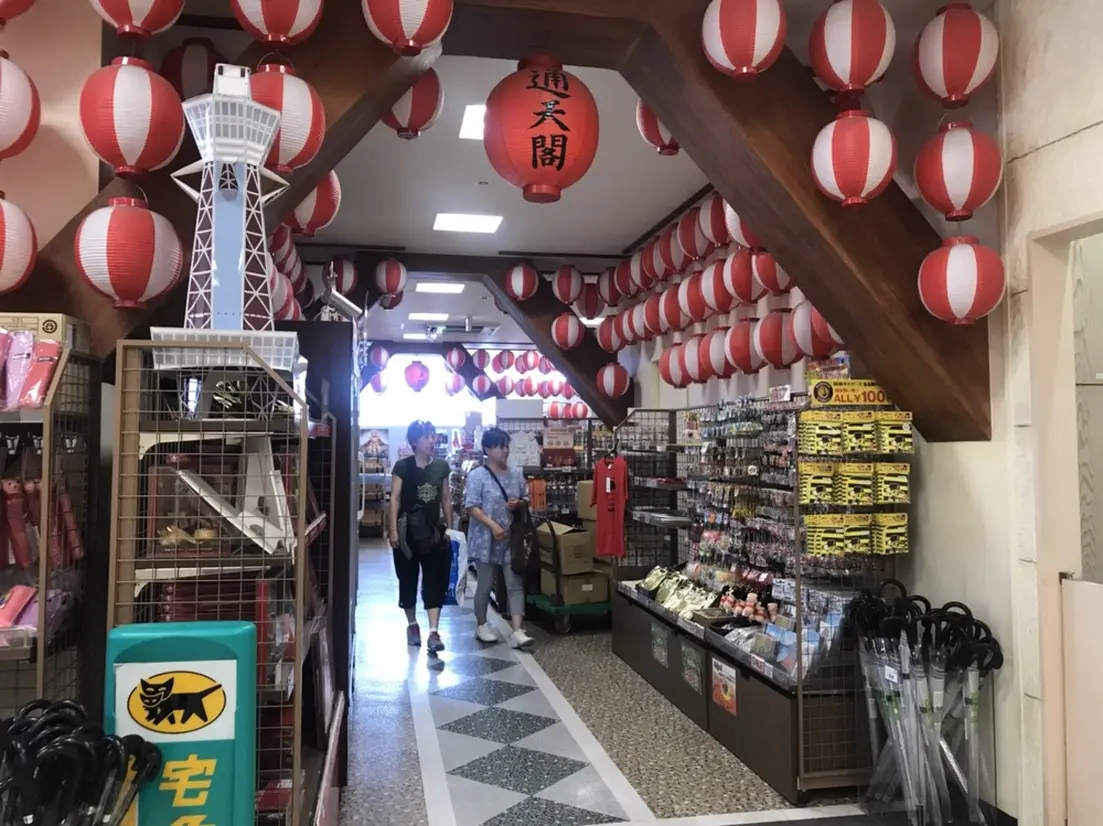
Enter through the entrance in Wakuwaku Land and take the elevator to the 2nd floor, where you'll find many Osaka souvenirs lined up. There's also a photo spot where you can take pictures with a model of Tsutenkaku. The cheerful staff members welcome you and heighten your mood for climbing Tsutenkaku.
Take the elevator from the 2nd floor and you'll quickly arrive at the observation deck on the 5th floor. By the time you've learned about Tsutenkaku's history in the elevator, you've already arrived. When you get off the elevator, a golden world spreads before you. The 5th floor is the golden, shining "Golden Observatory." From this observatory, modeled after Toyotomi Hideyoshi's tea room who achieved national unification, you can overlook the entire Osaka city.
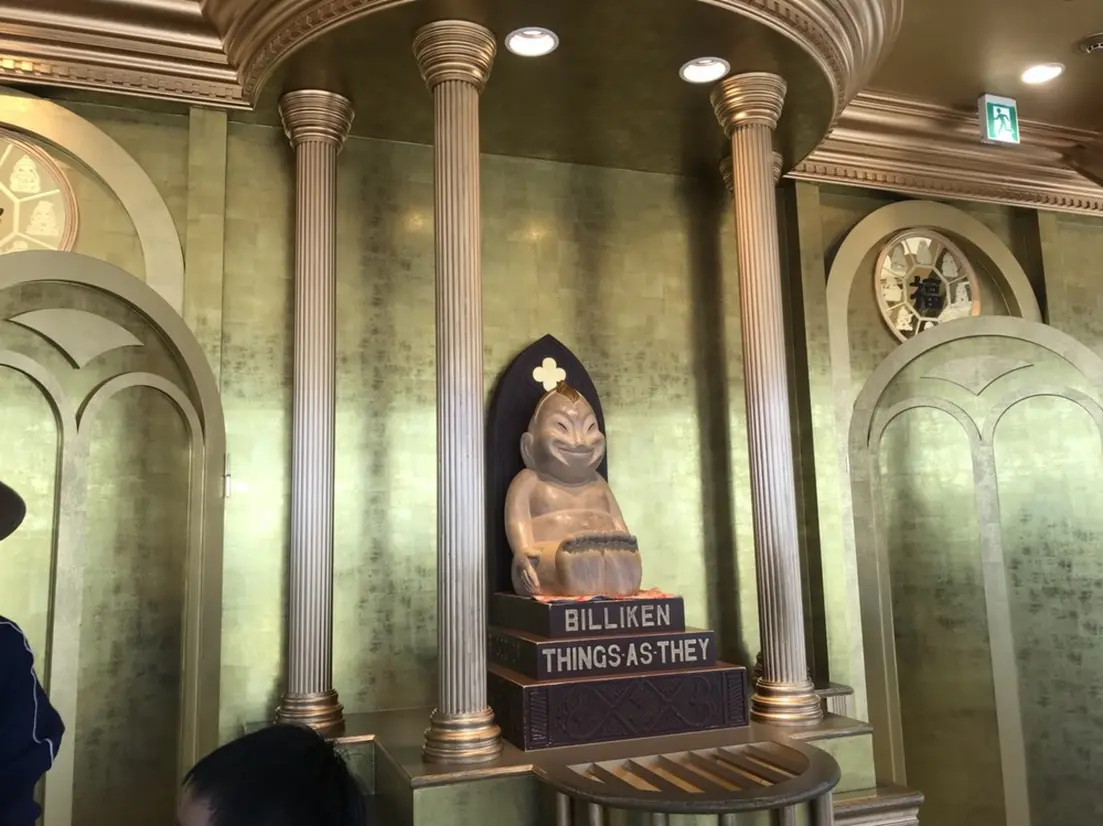
Also, here is the blonde "Billiken-san." Billiken-san is a god who brings good fortune. If you rub his feet and make a wish, it will come true. Also, the observatory has seven other gods besides Billiken-san. Go on a pilgrimage of the eight lucky gods (instead of the seven lucky gods, plus Billiken-san) and receive power.
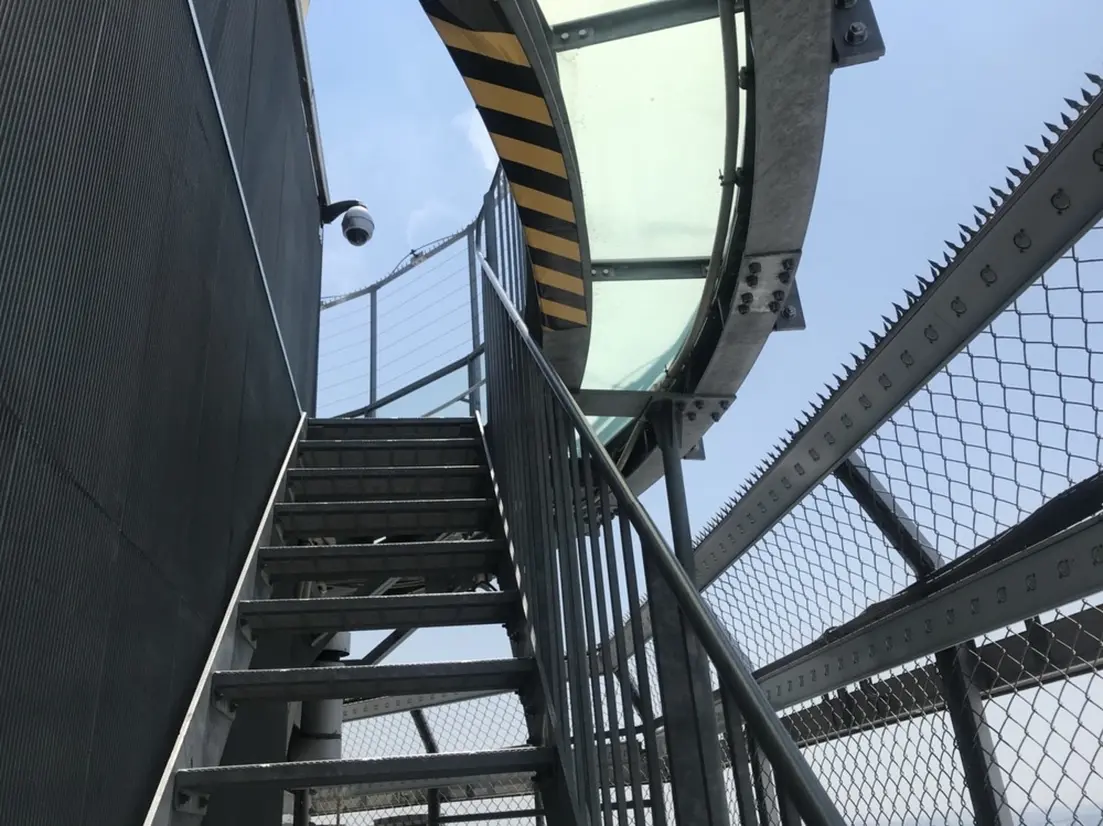
By paying an additional fee, you can go out to the special outdoor observation deck "Tenbo Paradise." Purchase a ticket at the reception in the Golden Observatory and climb the stairs to the observation deck.
You can overlook Osaka while feeling the wind outdoors, so you definitely want to climb on clear days. The night view is even more romantic, so after fully enjoying Osaka, it might be nice to relax here at night.
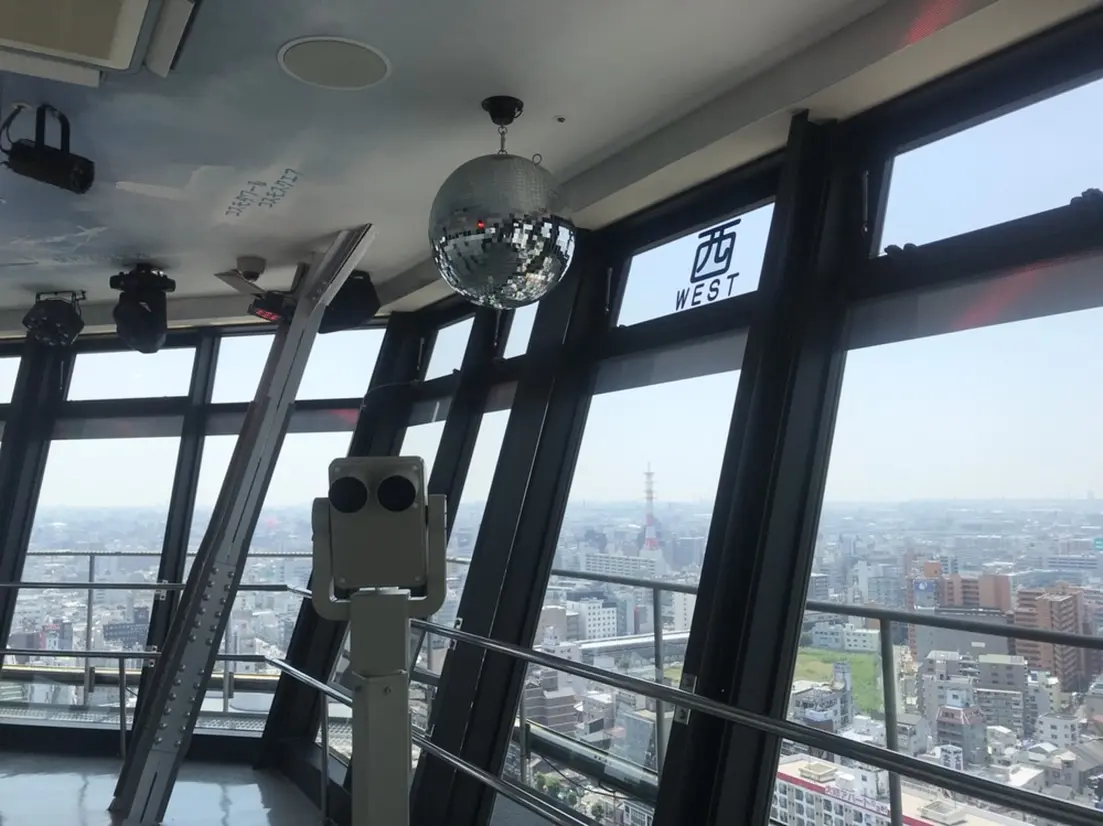
After enjoying the outdoor scenery, the 4th floor is the Light Observatory where mirror balls shine. True to Osaka's love of shiny things, you can view Osaka city up close while being surrounded by mirror balls and lights from daytime on.
Enjoy World Baths at SPAWORLD HOTEL & RESORT
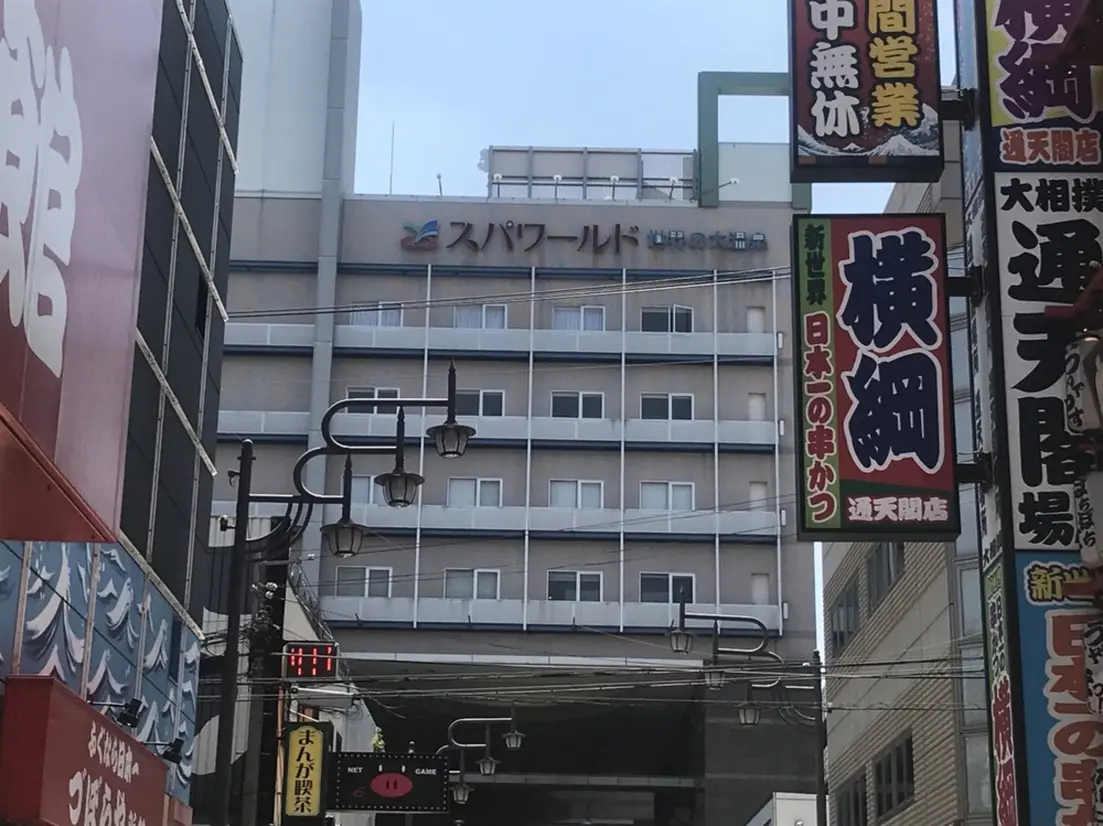
Very close to Shinsekai, at the foot of Tsutenkaku, is "SPAWORLD HOTEL & RESORT" where you can enjoy world baths. After walking around all day and getting tired, soak in hot water to relieve fatigue.
This is a spot where you can enjoy hot springs themed after famous spots around the world, such as ancient Roman baths and blue grottos. Divided into European and Asian zones, you can enjoy different themes monthly. When you pay the admission fee, hall clothes and towels are also rented, so it's a nice point that you can go empty-handed.
Also, inside the facility, there are pools with lots of amusements that you can enjoy year-round. Being indoors with temperature control, you can enjoy comfortably without worrying about sunburn, making it a very popular spot among Osaka residents. The thrilling water slider can be enjoyed with floats that can carry up to 4 people.
There are also bedrock baths from 8 countries around the world, which you can enjoy with couples or friends while experiencing the atmosphere. How about a course where you sweat a lot, work up an appetite, and toast with kushikatsu and beer?
Lucky God "Billiken-san" Tour
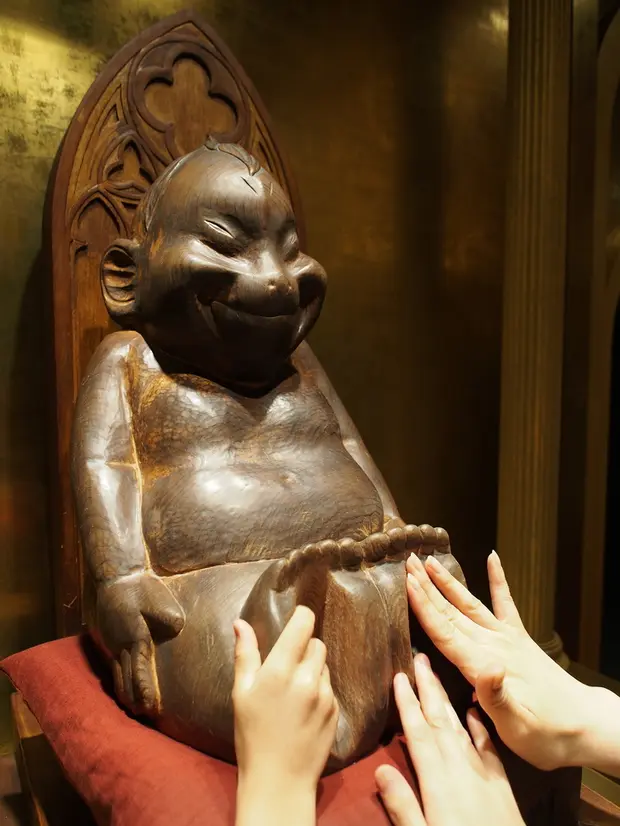
"Billiken-san," characterized by his distinctive smiling expression and protruding large feet, is a famous good luck god in Osaka.
Billiken-san was born in 1908, created by American female artist Florence Pritz. He appeared in Osaka later in 1912, displayed in Billiken Hall within the amusement park "Luna Park" that opened in Shinsekai along with Tsutenkaku.
Billiken-san's prominently protruding feet are said to bring good fortune when rubbed, and many people visit Tsutenkaku to rub his feet. Such Billiken-san can be found here and there throughout Shinsekai besides Tsutenkaku, so finding them is also fun.
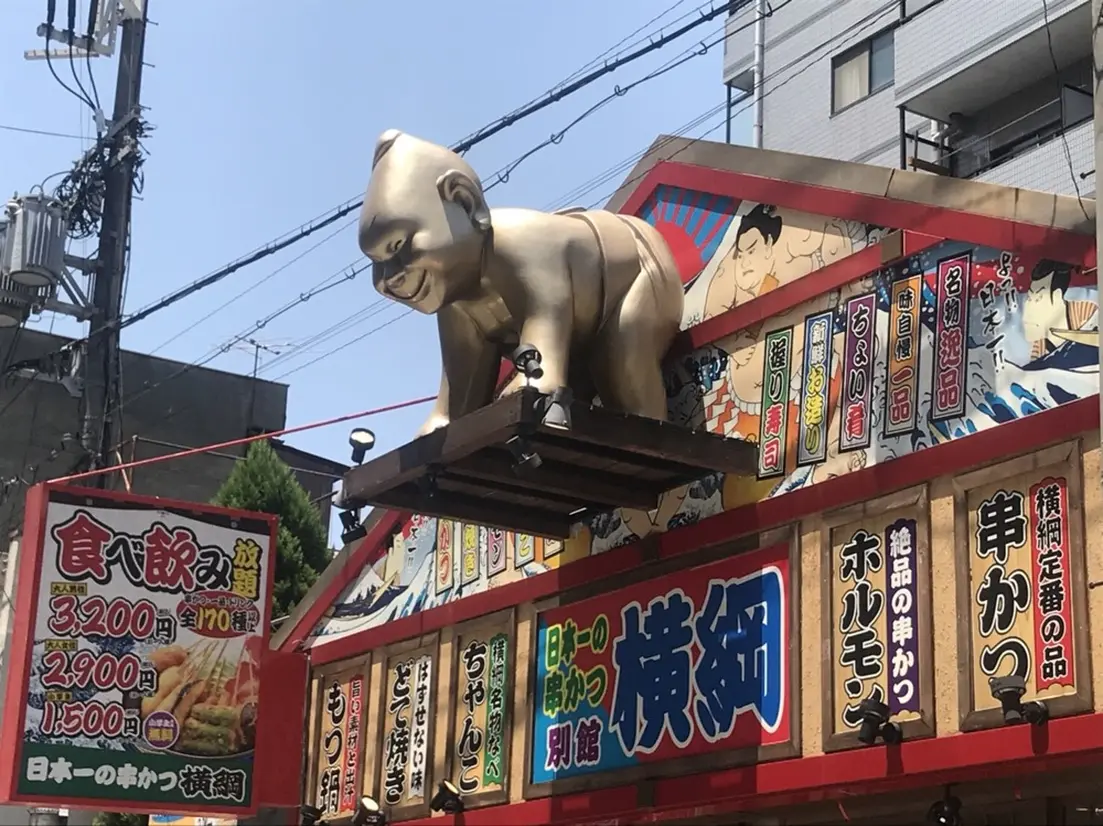
In Shinsekai, there are many shops, mainly kushikatsu shops. Billiken-san is often enshrined at these shop fronts. The variations are abundant, including Billiken-san sitting on benches and Billiken-san wearing Hanshin uniforms.
Such Billiken-san touring is also one way to enjoy Shinsekai. If you find a unique Billiken-san, definitely take a photo and make a collection.
Recommended Surrounding Spots
Lunch Options Within 10 Minutes Walk from Shinsekai
Original Kushikatsu Daruma Shinsekai Main Store
When it comes to Osaka Shinsekai, it's "kushikatsu." "Original Kushikatsu Daruma" is the original kushikatsu shop established in 1929 (Showa 4). Enjoy the three specialties of oil, coating, and special sauce, along with abundant menu items of over 50 varieties including meat, fish, cheese, and vegetables. Enjoy crispy, chewy kushikatsu with plenty of special sauce.
Kasu Udon Aburaya
"Cheap and delicious!" - the popular "Kasu Udon Aburaya." Please enjoy Kansai-style udon with juicy, fragrant, and rich "kasu" and kelp broth that brings out the flavor of the ingredients.
Grill Bon Shinsekai Main Store
The most popular item is the famous "Beef Fillet Katsu Sandwich." A katsu sandwich with rich demiglace sauce on carefully toasted bread. The rare fillet meat is thick and juicy like steak. It's said to be a standard backstage souvenir for kabuki actors and is also appreciated as a gift.
Jumbo Fishing Boat Tsuri-kichi
The big fishing boat sign is the landmark. Inside the shop are 3 large fishing boats, and you can experience fishing in the heart of Osaka. It's a new-concept seafood izakaya that's fun to fish and delicious to eat. It's also nice that they'll cook the fish you catch - grilled with salt, fried, sushi, sashimi, etc. - however you prefer.
Muteeppo Osaka Store
You can eat ultra-rich pork bone ramen in Osaka. It's a popular shop that has lines regardless of day or night. The thick soup has pork bone, pork fat, and pork meat flavors packed in, and goes perfectly with the slightly thick curly noodles.
Recommended for Tourism Combined with Shinsekai
Popular spots recommended for tourism combined with Shinsekai include the historic Tennoji Zoo with over 100 years of history just a 5-minute walk away, Tennoji Park where you can leisurely enjoy the scenery, and Abeno Harukas directly connected to Kintetsu Osaka Abenobashi Station.
Tennoji Zoo
Tennoji Zoo is located just a short walk from Dobutsuen-mae Station, about 10 minutes from Shinsekai.
Opened on January 1, 1915 (Taisho 4), it celebrated its 100th anniversary in 2015 (Heisei 27), making it a historic zoo. Currently, the approximately 11-hectare grounds house about 180 species and 1,000 animals, beloved as an urban oasis.
The park's exhibits feature popular "ecological displays" that recreate the landscapes of animals' habitats as much as possible and introduce how animals live there. Ecological displays are incorporated in the reptile ecological hall "AIFER," the "African Savanna Zone" where hippos, giraffes, lions and others live, allowing visitors to experience the natural environments where various creatures live.
Tennoji Park
Tennoji Park is located just a short walk from Tennoji Station, about 15 minutes from Shinsekai.
Established in 1909 (Meiji 42), it's a park with a long history. Within Tennoji Park are spots where you can enjoy natural scenery such as "Keitakuen," a pure Japanese-style forest spring walking garden with a tea house, and "Chausuyama," where Sanada Yukimura and others set up their main camps during the Siege of Osaka, as well as the Municipal Art Museum.
"Keitakuen" is a pure Japanese-style garden (forest spring walking garden) within Tennoji Park. In 1926 (Taisho 15), it was donated to Osaka City by the Sumitomo family, merchants since the Edo period.
"Chausuyama" in the northeastern part of Tennoji Park is well known as the site where Tokugawa Ieyasu's main camp was located during the Winter Siege of Osaka, and Sanada Yukimura's main camp during the Summer Siege of Osaka, becoming the stage for the "Battle of Chausuyama."
Abeno Harukas
Abeno Harukas is located just a short walk from Osaka Abeno Station, about 20 minutes from Shinsekai.
"Abeno Harukas," a 300m high super high-rise complex building boasting Japan's tallest height, is directly connected to Kintetsu Osaka Abenobashi Station and various Tennoji Station lines, offering excellent access.
With Japan's largest department store, observation deck, art museum, hotel, and various other diverse shops, it's a trend spot you can enjoy all day. Exquisite gourmet including lunch and sweets that you can enjoy with Osaka's best views is also abundant. For Osaka tourism, Japan's tallest building "Abeno Harukas" is unmissable.
Access Information
By Train
- Osaka Metro Sakaisuji Line "Ebisucho Station" - immediately
- Osaka Metro Midosuji Line/Sakaisuji Line "Dobutsuen-mae Station" - 3 minutes walk
Frequently Asked Questions Q&A
Which station is easiest to reach from Osaka Station?
The simplest route is to take the Osaka Metro Midosuji Line from Umeda Station, which is within walking distance of Osaka Station, and get off at "Dobutsuen-mae Station."
Can you enjoy kushikatsu and other food during lunch time?
Yes, depending on the shop, but many kushikatsu shops are open from daytime. There are many foreign tourists, so there are also many touts.
Isn't the security bad?
Major streets and streets lined with shops with foot traffic are fine. Underground passages from Dobutsuen-mae Station have little foot traffic and many incidents, so try to walk on streets with many tourists and foot traffic.
Basic Information
Shinsekai
Business Hours: Varies by shop
Closed: Varies by shop
Address: Ebisuhigashi area, Naniwa-ku, Osaka City
TEL: 06-6643-6322
Parking: Available
Inquiries: Official Website
